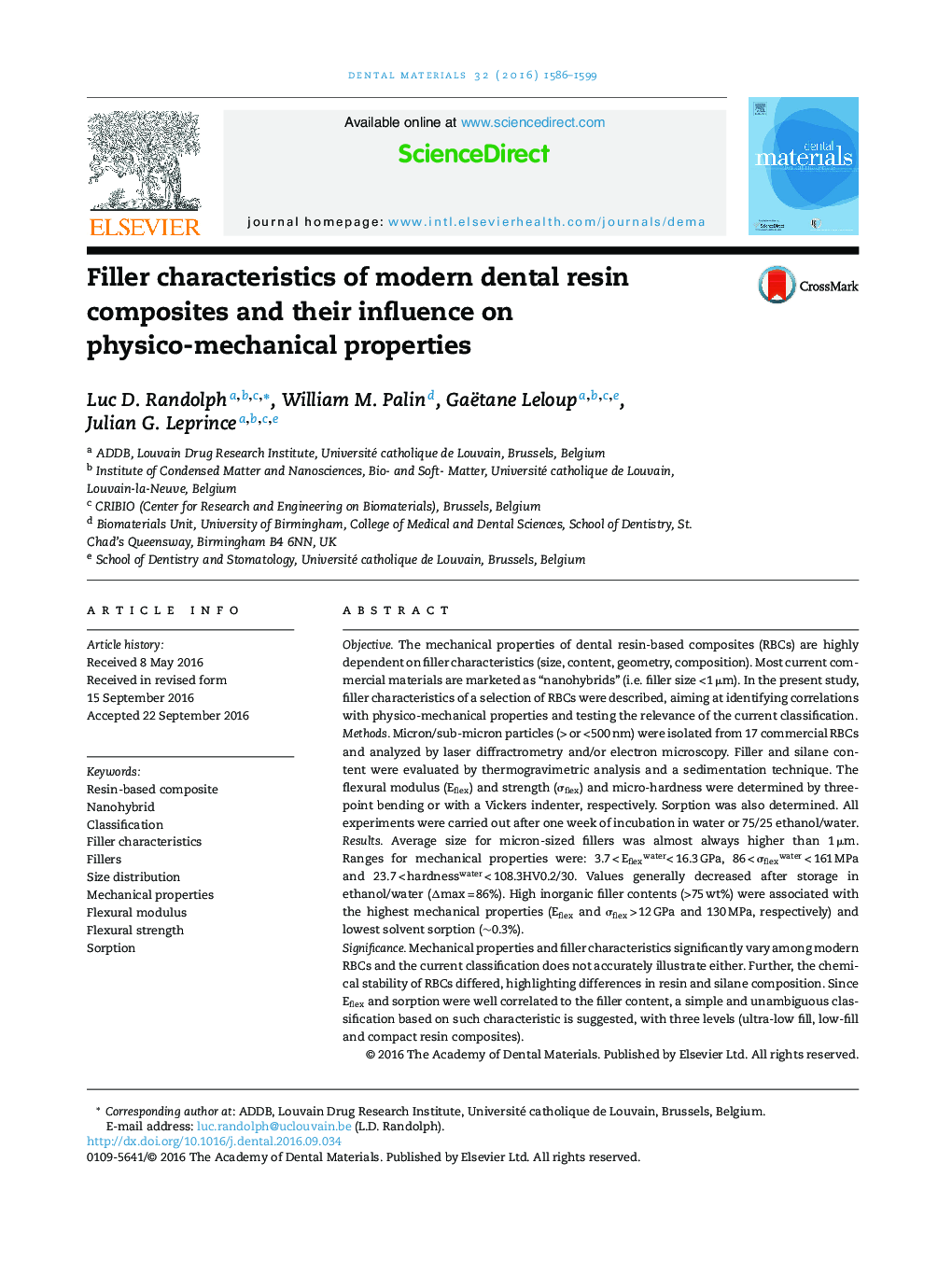| کد مقاله | کد نشریه | سال انتشار | مقاله انگلیسی | نسخه تمام متن |
|---|---|---|---|---|
| 5433139 | 1398054 | 2016 | 14 صفحه PDF | دانلود رایگان |
- Filler characteristics greatly vary among the 17 resin composites analyzed.
- Mechanical properties varied by up to a factor 3 among materials.
- Materials differed in their sensibility to incubation medium (water or EtOH/water).
- The filler content (Wfillers) was confirmed as major discriminatory characteristic.
- A simple classification and terminology can be suggested based solely on Wfillers.
ObjectiveThe mechanical properties of dental resin-based composites (RBCs) are highly dependent on filler characteristics (size, content, geometry, composition). Most current commercial materials are marketed as “nanohybrids” (i.e. filler size <1 μm). In the present study, filler characteristics of a selection of RBCs were described, aiming at identifying correlations with physico-mechanical properties and testing the relevance of the current classification.MethodsMicron/sub-micron particles (> or <500 nm) were isolated from 17 commercial RBCs and analyzed by laser diffractrometry and/or electron microscopy. Filler and silane content were evaluated by thermogravimetric analysis and a sedimentation technique. The flexural modulus (Eflex) and strength (Ïflex) and micro-hardness were determined by three-point bending or with a Vickers indenter, respectively. Sorption was also determined. All experiments were carried out after one week of incubation in water or 75/25 ethanol/water.ResultsAverage size for micron-sized fillers was almost always higher than 1 μm. Ranges for mechanical properties were: 3.7 < Eflexwater< 16.3 GPa, 86 < Ïflexwater < 161 MPa and 23.7 < hardnesswater < 108.3HV0.2/30. Values generally decreased after storage in ethanol/water (Îmax = 86%). High inorganic filler contents (>75 wt%) were associated with the highest mechanical properties (Eflex and Ïflex > 12 GPa and 130 MPa, respectively) and lowest solvent sorption (â¼0.3%).SignificanceMechanical properties and filler characteristics significantly vary among modern RBCs and the current classification does not accurately illustrate either. Further, the chemical stability of RBCs differed, highlighting differences in resin and silane composition. Since Eflex and sorption were well correlated to the filler content, a simple and unambiguous classification based on such characteristic is suggested, with three levels (ultra-low fill, low-fill and compact resin composites).
Journal: Dental Materials - Volume 32, Issue 12, December 2016, Pages 1586-1599
